In the events industry, there's been a lot of discussion around diversity, equity, and inclusion (DE&I), and for good reason. The right initiatives can make conferences better and safer places to be. I'm a firm believer that every person deserves to feel welcome and included in the events they attend.
Are you wondering how to make your event more inclusive? In this article, I'll teach you how to ensure your events encompass a wide range of perspectives, experiences, and backgrounds. I've also included everything from definitions to best practices, industry insights, and more.
By prioritizing diversity, your events team can create a more successful environment where participants feel free to be themselves, share their opinions, and make meaningful connections. This not only enhances the overall event experience but also contributes to a more equitable industry.
Table of Contents- What are inclusive meetings?
- What does DEI mean?
- Diversity types and categories
- 8 diversity and inclusion event ideas
- FREE diversity event checklist
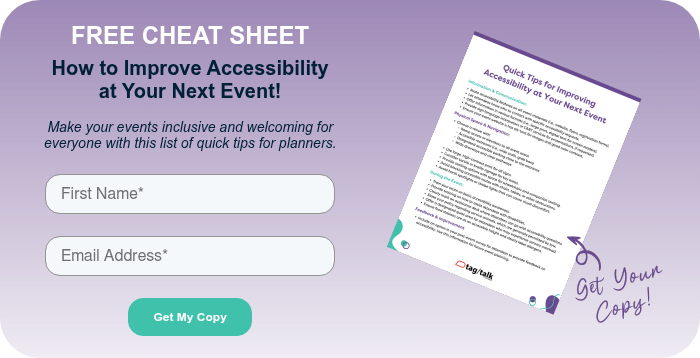
What does "inclusive meetings" mean?
Inclusive meetings are experiences designed to include everyone in attendance, no matter a person's age, race, gender, ethnicity, sexual orientation, or abilities.
Conferences, seminars, and expos have the power to bring a multitude of people together to discover new perspectives, support professional development, and empower voices from different walks of life.
It is for these reasons that diversity, equity, and inclusion (DE&I) have become essential elements of a successful event strategy. An event cannot be considered a success until every attendee is empowered to participate without barriers.
One thing we love about events is that they provide the opportunity to coexist with people who are different than us. To learn more, we asked Janet Sperstad, a CMP Fellow with 25+ years of experience, for insight on championing acceptance through inclusive event experiences:
What does diversity, equity, and inclusion mean?
Diversity, equity, and inclusion are three crucial elements that contribute to the overall success and effectiveness of any event.
- Diversity encompasses various aspects of a person, such as their race, ethnicity, gender, age, sexual orientation, disability, and socio-economic status.
- Equity involves creating a fair and just environment at an event. This involves providing equal opportunities and resources to all individuals, regardless of their background or circumstances.
- Inclusion involves creating an environment where everyone feels valued, respected, and included. It involves actively engaging and empowering guests to participate fully.
As an event manager, it's up to you and your team to ensure that everyone has an equal chance to participate, contribute, and succeed.
Ask yourself "What steps can we take to eliminate barriers, biases, and discriminatory practices that might hinder certain individuals from fully engaging in our event experience?"
Truly inclusive events foster a sense of belonging and create a safe space for individuals to express themselves, share their ideas, and collaborate with others. This not only enhances the overall event experience but also encourages innovation, creativity, and productivity.
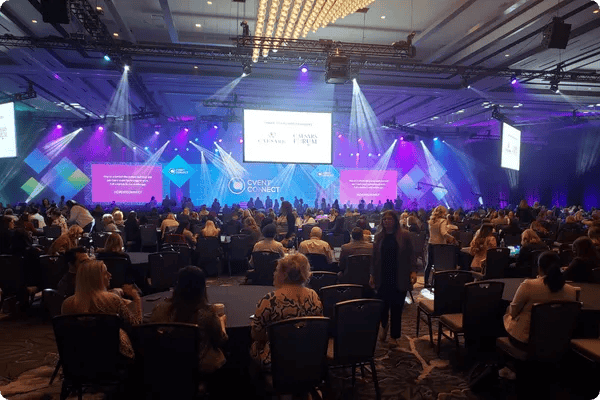
8 Types of Diversity in Events
As an event professional, implementing a few diversity initiatives isn't enough when creating a well-rounded event strategy. Event professionals must meet compliance targets, while also creating meaningful experiences that are integrated and effective.
Before creating an open and accepting environment, event professionals must first understand that diversity appears in many types and categories. Diversity types and categories include the following:
Cultural Diversity:Characteristics relating to a person’s ethnic background. Examples include a person’s customs, family values, and languages. |
|
Demographic Diversity:Characteristics relating to a person’s societal background. Examples might include a person’s education, nationality, and socioeconomic status. |
|
Racial Diversity:Characteristics relating to a person’s race. Caucasian, Black, African American, American Indian, Alaska Native, Native Hawaiian, Pacific Islander, and Asian are a few examples of race. |
|
Religious Diversity:Characteristics relating to a person’s spiritual beliefs. A person’s religious practices may be founded on Atheism, Buddhism, Christianity, Hinduism, Islam, Judaism, Sikhism, Indigenous Religions, or other religions. |
|
Age Diversity:Characteristics relating to a person’s age and generation. Silent Generation (b. 1928-1945), Baby Boomers (b. 1946-1964), Gen. X (b. 1965-1980), Gen. Y (b. 1981-1996), and Gen. Z (b. 1997-2012) all bring diverse perspectives to events. |
|
Gender Identity and Sexual Orientation Diversity:Characteristics relating to a person’s gender identity and their attraction to others. It is up to event professionals to create events that include and celebrate all identities and sexual orientations. Read more about LGBTQ-friendly event planning. |
|
Ability Diversity:Characteristics relating to a person’s physical and emotional capabilities. Public event venues must make reasonable accommodations to help people with disabilities integrate into the event experience without difficulty. |
|
Personal and Professional Diversity:Characteristics relating to a person’s life experiences. These characteristics are not protected by law but do shape a person’s viewpoints. Examples include learning preferences, political beliefs, motivation, goals, and skills. |
8 Diversity and Inclusion Event Ideas
1. Define your diversity goals and objectives.
Diversity discussion topics and questions include the following:
- Who is our event's target audience and how diverse is it?
- What strategies can we implement to attract a more diverse audience?
- How can we ensure diverse representation among speakers, presenters, and panelists?
- How can we showcase many ethnicities, genders, abilities, and other diverse groups?
- What steps can we take to make the event accessible to individuals of all abilities?
- How can we ensure inclusivity for attendees with different needs and preferences?
- In what ways can we incorporate cultural sensitivity into the event planning process?
- Are there particular cultural considerations that should shape our event design?
- How will we promote language inclusivity in event materials and communication?
- Are there plans for interpreters, translation services, or multilingual resources?
- How can our event programming cater to a diverse range of interests and preferences?
- What opportunities exist for interactive sessions that engage all attendees?
Inclusive Networking:
- What measures can we take to facilitate inclusive networking opportunities?
- Are there strategies to ensure everyone feels welcome and included during networking sessions?
Diverse Perspectives in Planning:
- How diverse is our event planning team? Are perspectives missing that we should consider?
- Do we have methods in place to gather input from diverse stakeholders?
Vendor and Sponsor Diversity:
- How can we ensure diversity among our event vendors, exhibitors, and sponsors?
- Are criteria in place to evaluate potential partners for diversity and inclusion practices?
Safety and Inclusivity:
- What steps will we take to ensure the physical and emotional safety of all attendees?
- How will our event address any incidents of discrimination or exclusion?
Feedback and Evaluation:
- How will we gather feedback on diversity and inclusion aspects of the event?
- What mechanisms do we have for continuous improvement based on attendee feedback?
Budget Allocation:
- How is our budget allocated to support diversity and inclusion initiatives?
- Are resources allocated for social equity training for event staff and volunteers?
Community Engagement:
- How can our event engage with local communities and include their perspectives?
- Are there opportunities for partnerships with community organizations?
Education and Awareness:
- How can our event contribute to educating attendees on diversity and inclusion topics?
- Are there plans for informational sessions or resources on these subjects?
Long-Term Impact:
- How will our event's commitment to diversity and inclusion extend beyond the event itself?
- Are there plans for ongoing initiatives and follow-up actions to reinforce these values?
DE&I discussion questions like these can guide your event planning team in creating an inclusive and diverse event, ensuring that diversity and inclusion considerations are embedded throughout the planning and execution processes.
Remember, it’s impossible to over-communicate your intentions with attendees. Use your pre-conference communications to tell people what to expect. For instance: Will there be flash photography, strobes, or flashing images that may cause seizures? Will fog machines or smells be used that might impact someone with chemical sensitivities? Will interpreting services be provided during panels and sessions? Will off-site social activities be fully accessible?
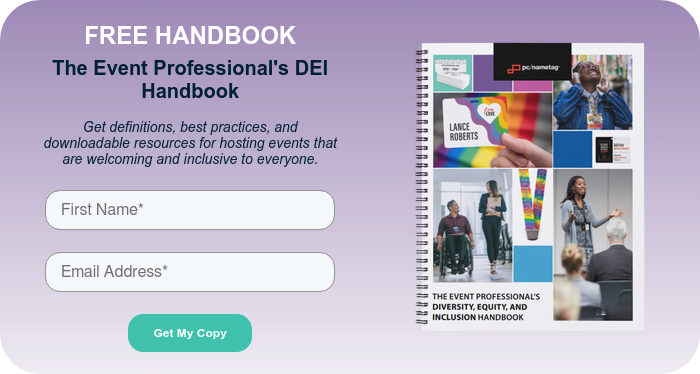
2. Explore diversity and inclusion topics for meetings.
When planning the program for your conference, consider infusing topics related to diversity, inclusion, and social responsibility. These types of topics can help foster awareness, understanding, and positive change among attendees.
Diversity and Inclusion Topics for Conference Breakout Sessions:
- Unconscious Bias: How does implicit bias or stereotypes impact our industry?
- Cultural Competence: How can you achieve more effective cross-cultural communication?
- Inclusive Leadership: How can we create a culture of inclusivity within our industry?
- Microaggressions: How can we promote a more respectful, inclusive environment?
- Accessibility: How can we be more accommodating to support diverse needs in our industry?
- Gender Equality: What strategies can we use to break down gender stereotypes and biases?
- LGBTQ+ Inclusion: How can we become stronger allies and supporters within our industry?
- Neurodiversity: How can we embrace and support neurodiversity in our industry?
- Diversity Metrics and Data: How can we measure and improve diversity and inclusion efforts?
- Building Inclusive Teams: How can we better support collaboration and belonging?
- Racial Equity: In what ways is our industry addressing systemic racism? Anti-racist practices?
- Cultural Celebration: How can our industry support cultural awareness?
These topics can serve as a foundation for discussions and initiatives that promote diversity and inclusion in various organizational settings.
3. Foster inclusive event design through ADA accessibility.
Inclusive event design starts with prioritizing ADA accessibility. This ensures equal access and participation for all attendees, no matter their ability.
The setup of your event space plays a crucial role in hosting an ADA-accessible event. While the temptation may exist to maximize seating by filling the room with tables and chairs, this configuration can pose challenges for people who use mobility aids.
It's also a good idea to allocate reserved seating at the front of the room for individuals who lip-read, are hard of hearing, or use electronic hearing aids. Provide adequate space for people who require sign language interpreters, allowing them to sit comfortably near the stage.
Always maintain clear aisles, not only to facilitate ADA accessibility but also for effective emergency action planning. Lastly, when structuring your agenda, factor in plenty of time for attendees with disabilities to navigate between sessions, access restroom facilities, and refill on refreshments.

4. Discuss DE&I goals with event vendors and suppliers.
Event professionals are pros at carefully selecting dates for their events, conducting site visits, and discussing their goals with vendors and suppliers.
Don’t forget that the organizations you work with should be your partners in planning. Your venue, caterers, suppliers, and vendors should be more than willing to discuss how they’ll help you reach your DE&I goals.
When exploring event vendors and deciding who to work with, consider the following:
- Are venue facilities wheelchair accessible, including ramps and elevators?
- Does the venue feature accessible restrooms and amenities?
- Are there designated parking spaces for people with disabled parking placards?
- Are there private spaces available for nursing mothers or prayer?
- Can the venue accommodate people who use assistive listening devices?
- How does the event venue handle cultural sensitivities and diverse dietary requirements?
- Does the vendor have a written diversity and inclusion policy to share with you?
- Is your caterer willing to work with diet restrictions and faith-based dietary needs?
- Is your venue willing to take steps to ensure every attendee has equal access to the event?
- How can your event badge supplier work with you to create credentials that reflect inclusivity?
Diversity initiatives and accessibility requirements should be top considerations when planning events. Make sure the organizations you work with are eager to join in your quest to make events as inclusive as possible.

5. Celebrate diversity through your event agenda, activities, and meals.
No attendee wants to feel like an outsider or burden at a conference. Event professionals must carefully plan their events to make sure all attendees feel a part of the overall experience. Celebrate diversity in your event agenda in the following ways:
- Avoid event dates that coincide with religious holidays in different faiths.
- Provide multi-faith prayer rooms for use during the conference.
- Ensure your venue has access to lactation rooms for nursing mothers.
- Accommodate requests for food-related restrictions, religious norms, and health considerations.
- Provide clear labeling of food options, listing any ingredients that may cause allergic reactions.
- Plan a menu that incorporates and celebrates food staples from various cultures.
- Provide a “mocktail” menu and alcohol-free drink options at the conference happy hour.
- Plan activities and sessions that celebrate diversity, equity, and inclusion topics.
When distributing your agenda to attendees, don’t forget to prepare event materials in different languages to make sure everyone has equal access to information. Your mobile app should also be accessibility friendly.
Want event more ideas? Fill out the form below to get a complete list of 50+ ways to host an inclusive event experience.

6. Select keynote speakers who reflect diversity.
Keynote speakers have the power to set the tone for your conference or event. The right presenter will not only add meaning to your event but also highlight your industry's unique perspectives.
Today, there is an increasing demand for presenters who reflect the diversity of the audience. In other words, your audience will struggle to identify with your programming if they do not see accurate representation.
Choose a diverse speaker who has fresh viewpoints on business trends, social justice, workplace culture, and more. Even better, hire women or Black, Indigenous, and People of Color (BIPOC) as speakers, presenters, and panelists.
- Read a list of motivational keynote speakers to hire for your conference.
- Read a list of Black motivational keynote speakers to improve event engagement.
Session moderators, too, play a part in creating safe event experiences. Moderators must keep panel discussions appropriate and civil, while also ensuring all voices are heard.
Tag Tip: Do not hire BIPOC speakers to speak on diversity alone. While DE&I issues are important, people of color have much more to speak about than racial inclusion. Instead, hire BIPOC speakers to talk about leadership, innovation, event technology, or other insightful topics.
7. Offer pronoun ribbons for attendees’ event badges.
Pronouns are used to refer to someone in place of their name or in the third person. For example, pronouns include he/him, she/hers, and they/them, though it is up to an individual to decide which pronouns work best.
It is important to avoid making assumptions about a person’s identity or pronouns based on their appearance or name. Using a person’s correct pronouns is a surefire way to create a more inclusive environment, no matter what a person’s identity is.
Want a fun, eye-catching, and cost-effective way to display personal pronouns? The Pronoun Badge Ribbon pack includes 100 stackable badge ribbons that attach to a person’s badge in seconds. Use these badge ribbons to provide a proper introduction and the ability to visually communicate your pronouns.
8. Host a post-event strategy discussion and survey.
Your event is over. Exhibitors are packing up, speakers are closing out their presentations, and attendees are saying their final goodbyes. But is your event truly over?
Now’s the time to initiate one of the most critical components of the event management cycle: your post-event strategy. Unfortunately, this is an area where many planners struggle.
When it comes to championing diversity, data collection, and attendee feedback are a must. Once your event has concluded, conduct the following:
- A post-event meeting where feedback is reviewed by your team.
- A post-event discussion with vendors where feedback is reviewed.
- A game plan on how to incorporate feedback at future events.
Measure your progress, set targets, and hold yourself accountable. Make sure to give attendees a variety of ways to give feedback, whether it is via email, mobile app, or an online form. Your post-event survey should ask specific questions on how you can make the event experience more welcoming in the future.
A Free Inclusive Event Checklist
The exciting thing about diversity is that it challenges us to foster connections, drive innovation, and build on each person’s unique strengths. DE&I is the key to embracing new strategies and accommodating different styles of thinking—one event at a time.
Are you hungry for more ways to embrace diversity, inclusion, and acceptance at events? Download the Inclusive Event Planning Checklist to find specific tips for being more inclusive of people at events.
Then, leave a comment below with how your organization is taking steps to bring attendees together for meaningful, inclusive event experiences. We can’t wait to hear your ideas and strategies!




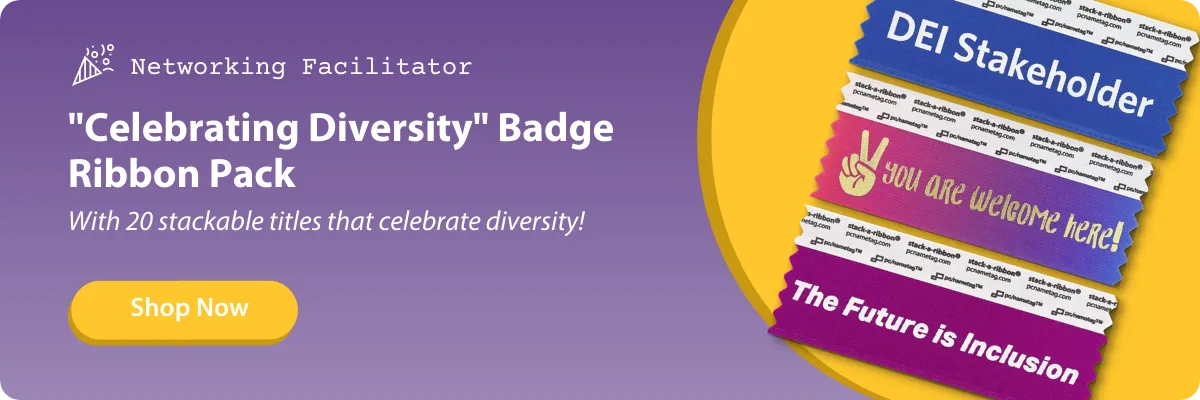
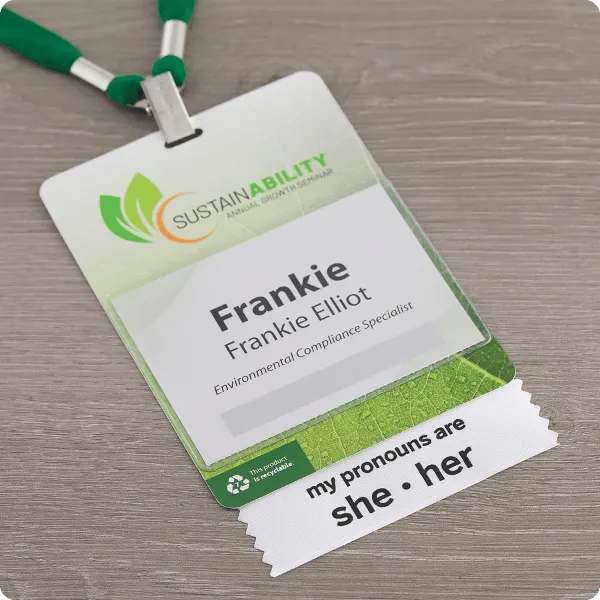
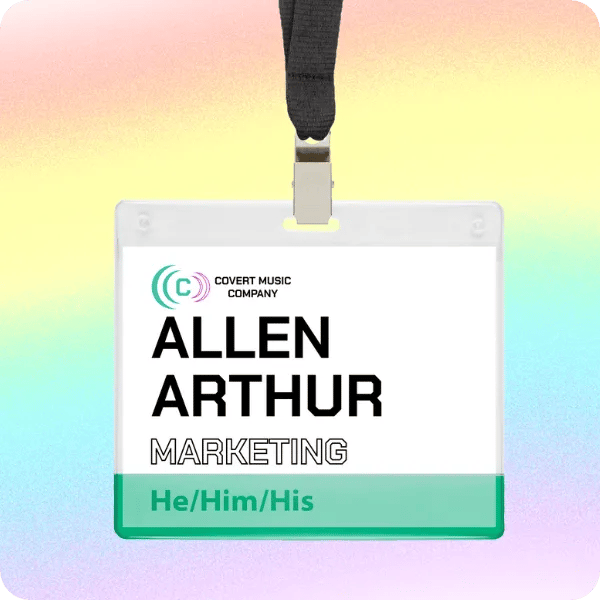
Submit a Comment